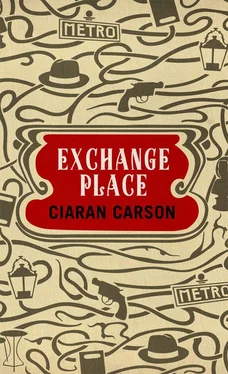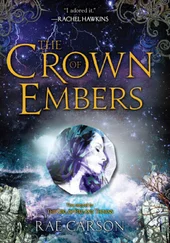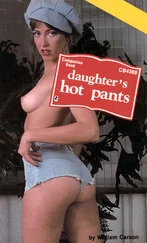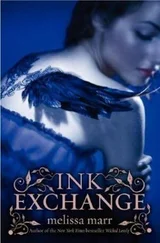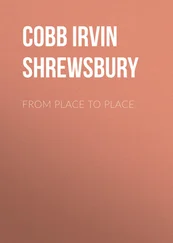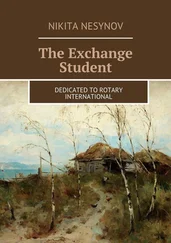Kilpatrick began to read and saw that it was so, that this was an account of what he had dreamed and how he saw and heard it. The sounds do not have the very precise frequency. For this reason, their combination is not organized according to their height but rather according to juxtaposition of tones, and so on, until he arrived in a different terrain where he became someone else, or else this was who he had always been. He saw himself looking at himself in the dream passport. He realized he was the man in the picture. A shot rang out. He took his own passport from the briefcase and looked at his photograph and his name and his autograph. I am John Gabriel Kilpatrick, he said. I am in Room 36 of the Hôtel Chopin in Paris, and I am writing a book which will feature extracts from books, fictional or otherwise, set in Paris, whether by writers living or dead, for the living writers would not write what they do were it not for the dead writers, whom they mirror, whether consciously or unconsciously. But I have been diverted from the path I thought myself on, and I find myself on another, which is proving interesting. Rue du Sentier indeed. He closed the notebook. His hangover had not entirely dissipated and he was still tired. He stretched himself on the bed and fell into a doze. He would pass the day at his leisure, have lunch perhaps in the Musée d’Orsay, perhaps taking in a little shopping before proceeding to his assignation.
Now it was seven o’clock and Kilpatrick stood before the door of 41 Rue du Sentier. By the light of the streetlamp he could see it was a plain shop front with no name above the door, just the number. He thought of an Edward Hopper painting. He took out the key that was in his pocket and opened the door. He went in and closed the door behind him. It was dark but the Venetian blinds were not fully drawn and lamplight filtered in though the gaps in the slats. He saw a desk in the middle of the floor and a man standing behind it. Kilpatrick made to greet the man before he realized it was a tailor’s dummy. He went over and examined it. The dummy was wearing a tweed suit, English 1960s cut, brown herringbone with a faint orange windowpane check, jacket with slanted hacking pockets, narrow-cut trousers with turn-ups. He turned to the desk. There was a buff cardboard ring binder on the desk, and a handwritten note, which read, If the suit fits, wear it. He took off his overcoat and his jacket and took the jacket off the dummy and tried it on. It could have been made for him. There was a cheval mirror in the corner of the shop and he went over and saw himself darkly, turning this way and that to admire the way the slats of light fell on the windowpane check. He went back to the desk and opened the ring binder. It contained a substantial typescript. The first page bore the legend X + Y = K . He was flicking through the pages when his eye fell on the name Kilpatrick. His heart skipped a beat. He read a paragraph:
Macaulay, Kilpatrick’s GP, had referred him to a Dr Holmes, whose premises at Alpha Chambers were located in the linen district. Gloomy Victorian buildings loomed above the damp pavements and the air was redolent with lint and coal smoke. Even since before the War, the industry had been in decline, but whole streets still remained that were almost exclusively devoted to textile agencies and outlets — imposing offices of exporters in fine damasks, long blank-windowed warehouses, little dim-lit shops that specialized in things like yarns and threads, diapers, handkerchiefs, art linen. He had taken the tram to Corporation Square. From there it should have been only a few minutes walk to the Alpha building in Steam-mill Lane, but Kilpatrick’s sense of the district was poor, and though he could see the entrance to the building in his mind’s eye — he had been interviewed there some years previously — he could not properly visualize its whereabouts. As he took yet another wrong turn he heard the spin-cycle din of a surveillance helicopter overhead. Feeling the invisible ray of its telephoto vision on the back of his neck, he looked up briefly. It hovered motionlessly on the many-fathomed wash of its own noise, dispassionately recording his movements. At least they would know where he was going, he thought ruefully …
As he skimmed the book further he felt a growing sense of bewilderment. Some bits were clearly fiction, but others chimed with his own memories, whether of his waking or his dreaming life. For example, the Kilpatrick in the book was prone to migraine, as Kilpatrick himself had been in his teens, and passages such as the following reflected his own experience:
Common to many experiences of migraine is the aura, a term first applied to the sensory hallucinations immediately preceding certain epileptic seizures. On closing the eyes, some patients experience a visual tumult or delirium, in which latticed, faceted and tessellated motifs predominate — images resembling mosaics, honeycombs, or Turkish rugs. These evanescent figments tend to be brilliantly luminous, coloured, highly unstable, and liable to sudden kaleidoscopic transformations. They are usually no more than a preamble to the major portion of the visual aura. Usually the patient goes on to undergo a longer-lasting and far more elaborate hallucination within the visual field — the migraine scotoma …
The slatted light was beginning to give him the jitters. Kilpatrick closed the ring binder and put it into his briefcase. He needed to get away and think.
As I considered the implications of the Japanese box, I looked at my watch. It was nearly three o’clock, and I remembered I had to meet a client at four to show him a watch. Nice Omega Constellation, 1960, running strong. It was a bright and sunny October day, perfect weather for the Livingstone suit. But when I went to the wardrobe where it should have been, it wasn’t there. I looked in the other wardrobes. Maybe I had stored it in the attic? I was still disorientated from the events of the past few days. I would look for it later, it must be somewhere in the house, suits don’t just get up and walk away by themselves, though I did remember Lazenbatt the tailor saying the trousers could stand up on their own, or was that the Burton suit? Whatever. I settled for an oatmeal Donegal tweed three-button jacket, navy-blue cord trousers, and dark tan Oxford brogues that matched my briefcase.
I was almost out the door when I remembered I’d forgotten to take my medication. So I did, a tablet each of clopidogrel, atoravastatin, bisoprolol, amlopodine and perindopril. Reminded of Glenn Gould’s prodigious consumption of pharmaceutical drugs — Nembutal, Luminal, Berutal, Valium, Librax, Indocin, Naprosyn, and Aldomet, among others — I took his CD of Contrapunctus XIV with me to play in the car. When I turned on the audio I got a crackle of static and reckoned it must be in radio mode, and was about to switch to the cD player when I heard the words, L’oiseau chante avec ses doigts — the bird sings with its fingers — and recognized the phrase as one of the enigmatic communications received on the car radio by Orphée in Jean Cocteau’s film of the same name, based loosely on the Orpheus myth. It seemed I was listening to a radio adaptation of the screenplay. In the film, the messages are transmitted from the Underworld by the young poet Cégeste, who has been killed by two motorcyclists, emissaries of a mysterious princess. Orphée publishes the messages as poetry and is accused of plagiarism. I heard another few fragments of dialogue before the radio emitted another burst of static. Then there was silence before I heard the phrase again, loud and clear: L’oiseau chante avec ses doigts. Deux fois. L’oiseau chante avec ses doigts. Deux fois. Je répète …
Читать дальше
